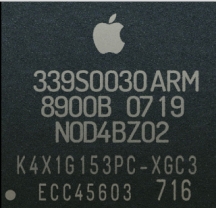Sometimes terminology changes faster than the technology it applies to. That’s arguably the case for the term application processor. Specifically, an application processor is a special kind of microprocessor. The application processor moniker came out of the cellular industry. In a mobile device, it refers to a chip used for the primary processing of cellular phone and other smart functions. This is in contrast with the chips that handle background functions such as running the display, handling wireless communications and managing power drain.

One big difference between a microprocessor and an application processor is their physical packaging. Many microprocessors are standard ICs with a standard part number. In contrast, mobile application processors are more typically systems on a chip (SoC) that incorporate the IP of one or more processor cores along with other ancillary functions.
Another difference is in the operating systems the two processors run. More general purpose embedded processors typically run a real-time operating system (RTOS) such as Integrity, VxWorks, or QNX Neutrino. An RTOS typically includes a real-time kernel that guarantees a certain capability within a specified time constraint, plus other higher-level services such as file management, protocol stacks, a graphical user interface, and so forth.
In contrast, application processors typically run a mobile operating system environment, basically a specialized RTOS, as well as applications software.
Another point to note is that where microprocessors may incorporate up to four processor cores, the SoCs hosting application processors may include not just multiple processor (typically ARM) cores, but also several graphics processing units (GPUs), cache memories, memory controllers for communicating with off-chip DRAM, audio and video decoders (and encoders), USB host controllers, and other functions as well.
There are a number of application processor suppliers. Among the most well-known are Nvidia with its five-core Tegra processor, Qualcomm with its Snapdragon, and Samsung with the Exynos line. Many low-cost smartphones are powered by a MediaTek processor. Non-smartphone mobile devices such as the Kindle Fire tablet use a Texas Instruments application processor called OMAP (open multi-media applications platform).
Another point to note about the application processors in smartphones is that they are often packaged in a way where a dynamic RAM package mounts on top of the application processor SoC. The technique is known as package-on-package (PoP). The benefit of this technique is that it requires only a separate NAND flash storage to be operable.

Thank you for your to the point definition.. It made a lot of sence and helped a lot.